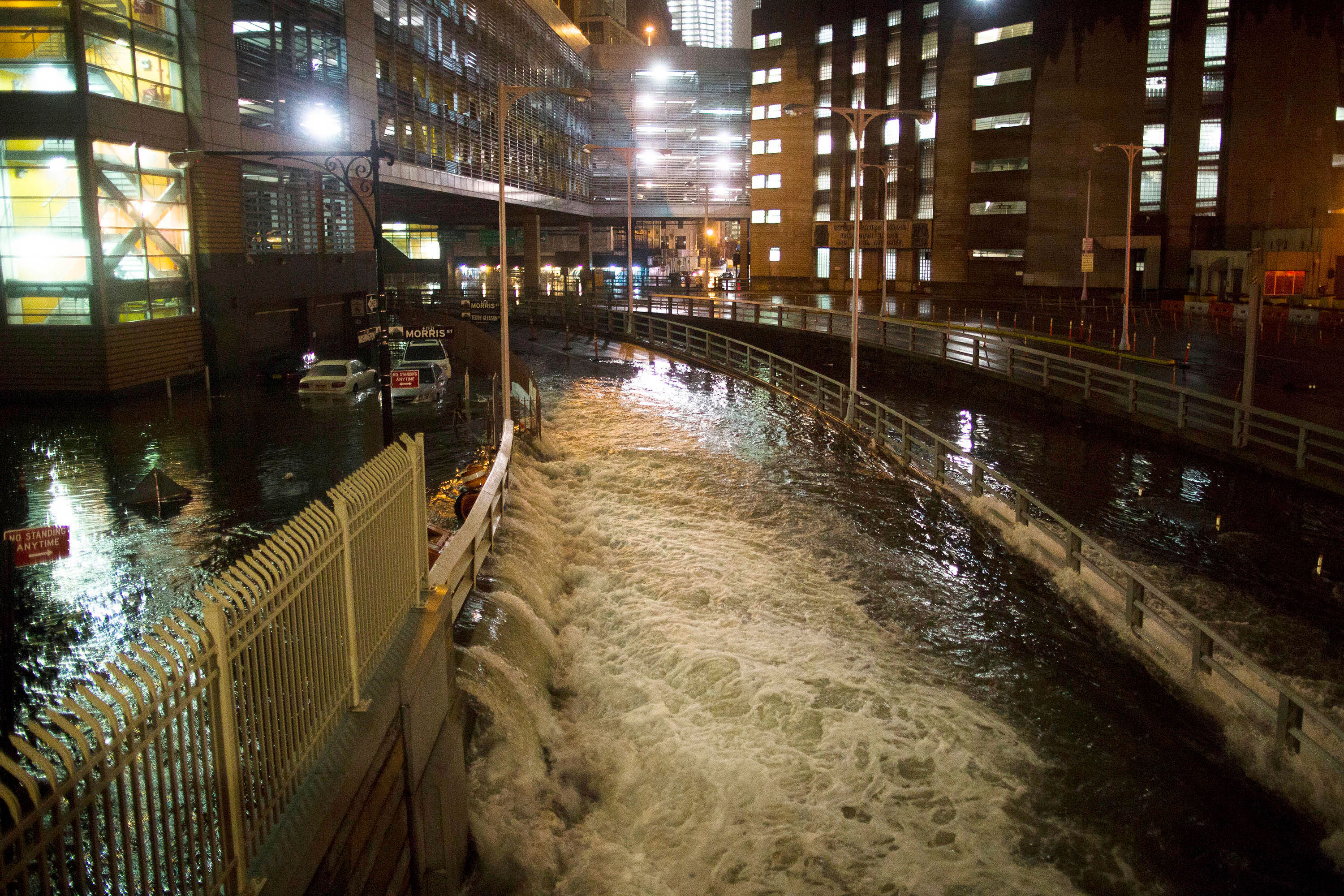New York City has big plans—and $20 billion—to save itself from climate change


In 2012, Superstorm Sandy devastated New York City, killing 44 people and inflicting an estimated $19 billion worth of damage. Now the city mayor’s office is investing billions into preparations for the next Sandy-like storm. And the increasing intensity of hurricanes in the Atlantic Ocean basin is just one of the dangerous effects of climate change the city must buttress itself against in the coming years, according to Jainey Bavishi, director of the NYC mayor’s office of recovery and resiliency.
The city must deal with rising sea levels, increasing precipitation, and longer and more dangerous heat waves, Bavishi said today at MIT Technology Review’s EmTech conference. “We expect the number of days above 90 degrees to triple by the 2050s,” she said.
That’s why the mayor’s office is spending $20 billion to make needed changes to the city’s built environment—and its sense of community.
To address rising heat, which Bavishi called “the silent killer” because the destruction it causes doesn’t get as much attention as hurricanes, for example, the city is planting more street trees and increasing reflective surfaces. One program is focused on painting roofs white, which doesn’t absorb heat from the sun as much as dark colors and can reduce energy bills by up to 30% during the summer.
Bavishi said the city has already coated 10 million square feet of rooftops in this way, targeting the most heat-vulnerable neighborhoods. And since heat waves often affect people in their homes, the mayor’s office has also launched a program designed to identify the most vulnerable people and find volunteers to check on them. It is also training home health aides to “detect early signs of heat illness,” she said.
The challenge of sea-level rise, which will increase the risk of flood damage during big storms, is particularly daunting. New York City has 520 miles (837 kilometers) of coastline, which is more than Los Angeles, San Francisco, Miami, and Boston combined, Bavishi said, adding that the city is expecting up to 30 inches (76 centimeters) of sea-level rise by the 2050s. It’s not as simple as building seawalls—the goal is to keep communities near the shoreline “livable,” she said: “There are ways to build walls that actually improve recreational spaces and sort of hide the wall.” For instance, the city is raising a park on the Lower East Side by eight feet, and building the wall at the waterfront.
There is still plenty of room for innovation in the area of climate adaptation and resilience, Bavishi said. Building seawalls and elevating buildings is very expensive. She said we should be thinking more broadly, from identifying new building materials to developing sensor systems to bolster real-time environmental monitoring.
Innovation is also needed in financing, Bavishi argued, adding that of the $20 billion NYC is investing, $15 billion came from the federal government as a response to Sandy. “These are challenges that inherently require proactive action and therefore proactive funding, and yet the money from the federal government flows reactively, after a disaster,” she said.
Deep Dive
Climate change and energy
The problem with plug-in hybrids? Their drivers.
Plug-in hybrids are often sold as a transition to EVs, but new data from Europe shows we’re still underestimating the emissions they produce.
Harvard has halted its long-planned atmospheric geoengineering experiment
The decision follows years of controversy and the departure of one of the program’s key researchers.
Why hydrogen is losing the race to power cleaner cars
Batteries are dominating zero-emissions vehicles, and the fuel has better uses elsewhere.
Decarbonizing production of energy is a quick win
Clean technologies, including carbon management platforms, enable the global energy industry to play a crucial role in the transition to net zero.
Stay connected
Get the latest updates from
MIT Technology Review
Discover special offers, top stories, upcoming events, and more.